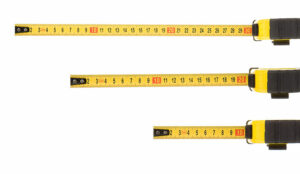Shrinkage is a key element of resource planning. Our panel give their tips on how to improve shrinkage.
What is Shrinkage?
Shrinkage is the amount of paid time that an employee is not available to do productive work, such as answer phone calls, despite being scheduled to work.
There is a good article here on How to calculate call centre shrinkage
Factor shrinkage into your staffing requirements
Factoring in shrinkage, you can calculate staffing requirements by subtracting the shrinkage percentage (in decimal form) from 1, then dividing your base staff requirement by that result to get the number of agents to be scheduled.
Formula: Number of agents divided by (1 – shrinkage percentage in decimal form) = Minimum number of scheduled agents required.
For example, if your calculated staff shrinkage is 25% and 30 staff are needed on the phones to deliver the desired speed of answer, then a calculation of 30/0.75 would yield a schedule requirement of 40 people.
In other words, 40 people need to be available to be scheduled, so that when the 25% shrinkage is factored in as unavailable time, there will be 30 people left to answer calls.
Avoid inflating the base staffing figure by the shrinkage percentage
Sometimes we see rookie planners inflating the base staffing figure by the shrinkage percentage to calculate the required staffing using the formula (Base staffing requirement) x (1 + shrinkage percentage). This is wrong!
Adding x% is not the same as dividing by (1-x%). If we add 25% to the base staffing requirement of 30, we get an adjusted requirement of 37.5.
In line with the above listed formula, the correct figure is 40. Using the wrong formula leads to understaffing and can result in burned-out agents and a poor customer experience.
Track unexplained absences closely to maximise productivity
Most of the shrinkage categories are “fixed,” such as paid holiday time or paid time off and paid breaks, as well as training, 1:1s and meeting time. These categories of shrinkage are non-negotiable and can be clearly defined.
Others like off-phone time, sick leave or unexplained absence should be tracked closely to ensure productivity is maximised.
Unexplained shrinkage cannot be totally eliminated but can be reduced to an acceptable level. All of these should be included in your shrinkage calculation.
Forecast down to 15- or 30-minute intervals
Base staff is the number of agents needed at different times of day to handle typical call volumes. This usually varies by time of day or day of the week.
Good practice is to forecast down to 15- or 30-minute intervals and to take into account variations in both volume and Average Handling Time.
Average Handling Time often differs by time of day. For example, evening calls tend to be longer than daytime calls.
With thanks to Chris Dealy at injixo
Don’t just write down 10% and keep your fingers crossed
Shrinkage is a critical planning assumption that requires the same focus and analysis as workload forecasts and performance metrics. It can be too easy to just stick 10% against a category and keep your fingers crossed.
One classic mistake I see is when sickness is being budgeted – only 3% will be planned for when the operation is currently operating at 7%!
Shrinkage is the sum of the parts, so if you conduct two x one-hour communication sessions per week – per Full Time Employee (FTE) – then calculate what this number is for the week, the month and the year.
Don’t flat line shrinkage across the year
Analyse historical shrinkage trends and don’t flat line shrinkage across the year.
It is very rare for sickness to be the same percentage every week or month of the year.
Likewise, other categories, such as training, won’t necessarily be the same all the time.
Use decimal points and don’t round down
Make sure you use decimal points – and don’t round it down!
You will be amazed at how much 0.1% soon adds up as a cost over the course of a year.
Don’t create a catch-all “other” category

Phil Anderson
Be careful when creating categories for shrinkage that you don’t create a catch-all called “other” that has a higher percentage than the main categories.
Consider splitting categories down further. For example, ‘sickness’ (maybe split into long and short-term), ‘annual leave’ (sometimes split with bank holiday and annual leave), ‘training/coaching’, ‘communication’ (including one-to-ones and team meetings) and ‘non-adherence’.
Having different categories can help you monitor performance and identify specific areas for improvement.
With thanks to Phil Anderson at The Forum
Split your shrinkage measurements into planned and unplanned

David Evans
Split your categories into planned and unplanned shrinkage.
Planned is holidays, lunches and training that can be planned in advance, while unplanned shrinkage is the factor for last-minute meetings and unplanned training.
Track schedule adherence with a WFM application
A WFM application with schedule adherence can enable you to measure shrinkage at a granular employee level.
This can track – from agent level upwards – the exact time spent in planned and unplanned shrinkage.
It also provides a long-term view of actual shrinkage that can be used to build budgets.
If you are in a season-based environment, it can also give your business the opportunity to flex shrinkage across the year, increase allowances in quiet periods and reduce for busy periods.
With thanks to David Evans at Business Systems.
Monitor schedule adherence to reveal the true impact of absenteeism

Mike Donohue
Manage the actual versus the plan, by calculating the impact that things like absenteeism or late individuals have on the service you are delivering to your customers.
With thanks to Mike Donohue at Magnetic North
Calculate shrinkage individually for each department
Shrinkage should be calculated individually – especially in a multi-department contact centre – rather than for the centre as a whole.
Remember that shrinkage is a measure of the amount of time agents spend being non-productive – and the classification of this can be discretionary.
For example, a helpdesk would need to spend considerably more off-phone time conducting research than a department with more routine customer contact. Due to this, the helpdesk would receive a higher shrinkage percentage.
However, if management deems research time between calls productive, it does not have to be classed as shrinkage at all.
Work across the business to determine how shrinkage can be reduced

Stefan Captijn
Once a shrinkage number has been calculated, it can be used to determine the lowest number of employees needed – in addition to base staff – to facilitate a productive work schedule.
Call together key stakeholders – make sure you include trainers, team leaders, management – and analyse the data gleaned from monitoring the factors affecting shrinkage.
Then decide how the shrinkage figure can be impacted, and particularly how it can be reduced.
With thanks to Stefan Captijn at Genesys
What do you include in your shrinkage calculations? Do you include meetings, late, sickness?
Please leave your comments in an email to Call Centre Helper
Click here to use our Call Centre Erlang Staffing Calculator – including Shrinkage
Author: Robyn Coppell
Reviewed by: Megan Jones
Published On: 26th Nov 2014 - Last modified: 28th Aug 2025
Read more about - Hints and Tips, Adherence, Business Systems, Chris Dealy, Erlang Calculations, Genesys, Intrado, Peopleware, Phil Anderson, Shrinkage, Staffing, Stefan Captijn, The Forum

















Hi,
Someone, please confirm how to calculate unplanned absence, planned absence & total absence with below figures. Thanks
Total HC – 20
Planned Leave – 3
Unplanned Leave – 2
Attrition – 1
OFF – 4
Thanks
Total HC= 20
Attrition = 1
Then Attrition will be calculated as
1/(20+19)/2*100
1/19.5 *100
10/195 * 100
5.13 % is your attrition rate
Planned Absenteeism for you excluding the attrition will be = (3 Leaves + 4 OFF)/(19 total staff excluding your attrition)
=7/19 = 0.36 is your planned shrinkage
= 36 %
Unplanned Shrinkage = 2/19*100
= 10.5 %
Total Shrinkage= Planned + Unplanned
= 36 + 10.5 = 46.5 %
Why are you including the OFF in the shrinkage? If it’s their RDO then they never had a shift to begin with and aren’t contributing to your forecast surely?
Agree with Sam, you cannot apply shrinkage to a period that was never to yield any productive hours in the first instance.